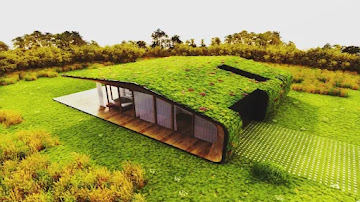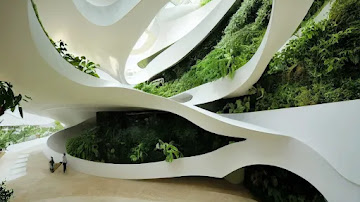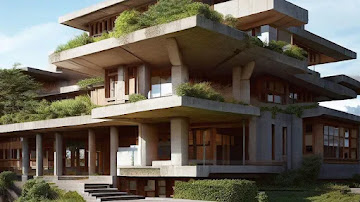Animals are experts at building dwellings. From ants and their elaborate subway nests to bees and their intricate hives, animals have evolved to build incredibly complex and efficient structures that allow them to survive in their natural environment.
This ability of animals to build structures has also
influenced human architecture throughout history. Architects have observed and
studied animals to draw inspiration from their construction techniques and
apply them to the creation of human buildings and structures.
Learn more about: Architecture salary
Polygons in Nature and architecture
One of the best-known examples is the geodesic dome, an
architectural design based on the structure of snow crystal spheres and bee
hives. This design was developed by engineer and architect Buckminster Fuller
in the 1950s, who was inspired by bee hives to create a self-supporting, sturdy
structure.
The Thermite Thermal Tower is one of many examples, located
in Etosha National Park in Namibia. This structure, which can reach up to 8
meters high, is built by termites using a mixture of soil, saliva, and feces.
The tower can maintain a constant temperature inside, which allows the termites
to live comfortably inside.
The architects believe that organicism does not seek a
correspondence between architecture and nature and have studied the structure
of the Thermite Thermal Tower to develop construction techniques that are more
efficient in terms of energy and resources.
Another example is the structures built by weaver birds,
which use twigs and grasses to build intricate and sturdy nests. Architects
have studied these structures to develop construction techniques that are
lighter and more resistant to the elements.
What is the relationship between architecture and nature?
The influence of animals on architecture is not limited to
the construction of buildings and structures. It has also influenced urban
design and landscape planning. For example, landscape architects have studied
how animals use natural resources to create sustainable and efficient habitats.
They have used this information to design urban landscapes that are more
environmentally friendly and more attractive to wildlife.
Conclusion
In conclusion, the influence of animals on natural
architecture is evident in many aspects of biophilic construction and design.
Animals have evolved to build efficient and resilient structures that allow
them to survive in their natural environment, and architects have used these
techniques to create buildings and structures that are more sustainable and
efficient.
The collaboration between architecture, nature, and design
can be beneficial to both humans and animals, and it is important to continue
to study how animals build their homes to further improve our construction and
design techniques.










